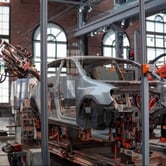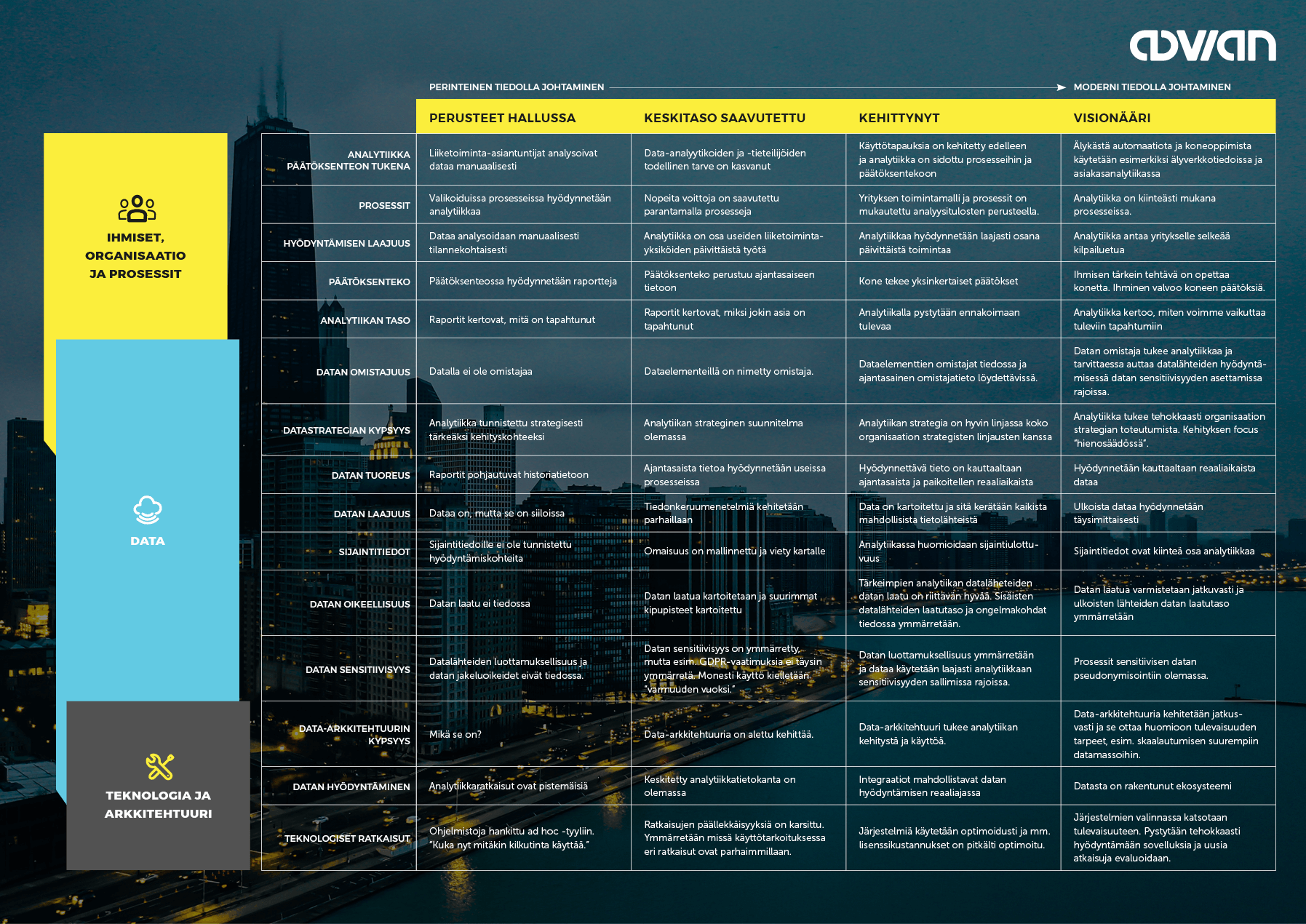A survey by Taloustutkimus from 2015 shows that most Finnish companies see carbon neutrality and a low carbon footprint as sources of strategic competitiveness and as significant factors for their operating environment. Moreover, sustainable production and the transparency of the entire product lifecycle have become requirements by customers, investors, and other stakeholders.
Why do data and new technologies, such as machine learning, edge computing, and artificial intelligence, have a significant role in achieving climate goals? How can you develop better metrics and analytics to reach your targets?
Make climate action visible through analytics
It will be challenging to assess the impact of your efforts if you don't have the right kind of analytics in place.
While climate change, its drivers, and mitigation measures, are certainly understood at least at a high level, there are many sub-themes and factors influencing climate change that can be difficult to grasp. You should always base your decisions on science, facts, and data - not opinions.
To achieve the top-level target (for example, a 30% reduction in carbon emissions by 2035), you must first structure it into sub-targets and milestones that you can transparently monitor.
Large entities should be broken down into smaller, easier-to-handle pieces and presented as clear results. Through analysis and visualization, it is also easier to weigh and prioritize different options.
Of course, everything starts with the current state analysis - and that requires data. Consider at least the following themes:
- Do we have good visibility into the different stages of the life cycle and production?
- Are there any uncertain sections in the processes, when it comes to quality?
- At what stages of the life cycle do we have the most to improve?
- Where do we have waste?
- How carbon neutral are our product life cycles?
Data fusion brings insight
Manufacturing constantly generates large amounts of data. Over time, data easily becomes siloed - data just sits in the data warehouse, or its use is very limited and point-like. The same data could provide value in many other use cases, but often it's only used in a particular operational activity, or its wider use is too cumbersome.
Data fusion means that two or more different data sources are combined, which creates new information. Without industry knowledge and understanding of the context, data science alone cannot provide all the right answers. But the two combined can bring out very important cause-and-effect relationships.
By breaking data silos, it is possible to expand the view; sub-optimization should be avoided, and the data collected should be used extensively and across the organization. This is important when trying to achieve larger-scale goals and monitoring progress.
Minimize the life cycle burden
Supply chain and logistics (while important) do not provide a complete answer to assessing the life cycle impact.
When it comes to sustainable development, the focus is often on emissions from production and logistics processes. Undeniably, these are the largest individual factors, but also the most easily verifiable. Monitoring, reducing, and optimizing emissions is often the most logical starting point. It is a lot harder to improve the sustainability of the entire production if you don't have a clear understanding of the total life cycle burden.
By the life cycle burden I mean the climate impact of the entire product life cycle - sustainable development should cover everything from the initial research processes to the end-of-life activities of the product. Gathering data from all stages of the life cycle helps to highlight bottlenecks or dependencies that were not initially thought of - often the whole is more than the sum of its parts.
Less waste
With many different sources of information, it is easier to see where waste occurs at different stages of operations and how to start eliminating it.
Waste is often associated with concrete things such as materials or emissions. Duplicate projects, inefficient practices, and poor management systems in themselves already cause a huge amount of waste.
Waste occurs in several different situations: for example, it is the materials used in production, the extra work caused by errors, waiting or idling in logistics operations, the poor quality of products, or the inability of an organization to produce results. Thus, development work to reduce waste cannot be limited to certain parts of activities, but this too should be seen as a holistic area of continuous development - many small wins will create a more sustainable world.
When it comes to material and quality loss, edge computing, machine learning, and machine vision can be used to make current quality assurance processes automated and intelligent. This helps to reduce quality errors caused by human mistakes or missing control points.
Efficiency alone is not enough - we need innovation
In the long run, strategic focus cannot solely rely on increasing efficiency. Organizations need the courage to innovate.
Companies should actively seek to develop products that are environmentally sustainable by principle. Innovations are not only new products: you must also be able to rethink manufacturing or production processes, distribution, maintenance, and the end-user experience.
When the perspective of renewal and innovation is included in the life cycle burden analysis, the data collected from the different phases is of enormous importance. With edge-computing based solutions, it is possible to gather new and up-to-date information on work steps that have previously been hard to measure.
Consistent work for sustainable development, data collection, analysis, and proper utilization are immeasurably valuable tools - and even more so in the upcoming years.
Would you like to make your operations more sustainable with insights from data and emerging technologies?
Let's talk! Book a free 30-minute discussion with our industry experts below. 👇

Learn more about our Smart Factory solutions
Smart Factory enables intelligent automation of your factory.

Topics: Ai, Edge Analytics, Advanced Analytics, Machine Learning, Edge AI, Manufacturing, Smart Factory, Leadership, Sustainability













